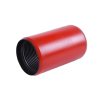- Afrikaans
- Albanian
- Amharic
- Arabic
- Armenian
- Azerbaijani
- Basque
- Belarusian
- Bengali
- Bosnian
- Bulgarian
- Catalan
- Cebuano
- Corsican
- Croatian
- Czech
- Danish
- Dutch
- English
- Esperanto
- Estonian
- Finnish
- French
- Frisian
- Galician
- Georgian
- German
- Greek
- Gujarati
- Haitian Creole
- hausa
- hawaiian
- Hebrew
- Hindi
- Miao
- Hungarian
- Icelandic
- igbo
- Indonesian
- irish
- Italian
- Japanese
- Javanese
- Kannada
- kazakh
- Khmer
- Rwandese
- Korean
- Kurdish
- Kyrgyz
- Lao
- Latin
- Latvian
- Lithuanian
- Luxembourgish
- Macedonian
- Malgashi
- Malay
- Malayalam
- Maltese
- Maori
- Marathi
- Mongolian
- Myanmar
- Nepali
- Norwegian
- Norwegian
- Occitan
- Pashto
- Persian
- Polish
- Portuguese
- Punjabi
- Romanian
- Russian
- Samoan
- Scottish Gaelic
- Serbian
- Sesotho
- Shona
- Sindhi
- Sinhala
- Slovak
- Slovenian
- Somali
- Spanish
- Sundanese
- Swahili
- Swedish
- Tagalog
- Tajik
- Tamil
- Tatar
- Telugu
- Thai
- Turkish
- Turkmen
- Ukrainian
- Urdu
- Uighur
- Uzbek
- Vietnamese
- Welsh
- Bantu
- Yiddish
- Yoruba
- Zulu
tubing and casing
Tubing and Casing Essentials in Oil and Gas Well Construction
In the oil and gas industry, the terms tubing and casing are fundamental components of well construction. These elements are crucial for maintaining the integrity of the well and ensuring the safe and efficient extraction of hydrocarbons from the earth. Understanding the roles of tubing and casing is vital for professionals in the field, as well as for those who are interested in the technical aspects of drilling and production operations.
The Role of Casing
Casing is a series of steel pipes that are installed in the wellbore after it has been drilled to provide structural support. The primary purpose of casing is to stabilize the walls of the well and prevent the collapse of the surrounding formation. This is particularly important in areas where unstable geological conditions exist. The casing also serves to isolate different pressure zones within the earth. By doing so, it prevents the migration of fluids between these zones, which can lead to environmental hazards, such as contamination of freshwater aquifers.
The casing process involves several steps. After drilling a vertical wellbore to a designated depth, the drilling operation is interrupted to insert casing. The casing pipes are connected and lowered into the wellbore. Once in place, cement is pumped down the casing and up around the annulus between the casing and the borehole wall. This cement sets and hardens, creating a solid barrier that ensures the casing remains in place and provides further protection against fluid migration.
Casing comes in various sizes and grades, depending on the well's depth, potential pressures, and the geological environment. The most common types include surface casing, intermediate casing, and production casing, each serving specific functions throughout the life of the well.
The Importance of Tubing
Tubing, on the other hand, is the smaller diameter pipe that is inserted inside the casing and serves as the conduit for oil and gas to flow to the surface. Once the production casing is installed and cemented, the tubing is run into the wellbore to facilitate the extraction of hydrocarbons. Tubing must be durable and resistant to corrosive substances present in produced fluids, making material selection critical for the longevity and efficiency of the well.
tubing and casing

One of the significant advantages of using tubing is that it allows for easier maintenance and replacement. If issues arise within the well, operators can remove the tubing without having to replace the entire casing. This modular approach reduces costs and downtime, making it an attractive option for operators.
Additionally, tubing is often equipped with production equipment such as packers, which are devices that create a seal between the tubing and the casing to manage the flow of fluids. This capability allows for better control over production rates and enhances the overall efficiency of the extraction process.
Challenges and Considerations
While tubing and casing are critical for oil and gas operations, they are not without challenges. One significant concern is the potential for corrosion, especially given the harsh environments in which these materials operate. Corrosion can stem from various sources, including the chemical composition of the produced fluids and external factors such as water intrusion. Operators must regularly monitor the integrity of both tubing and casing, employing techniques like logging and inspection to identify potential issues early.
Furthermore, the process of installing casing and tubing can be complex and expensive. Operators must carefully plan the drilling and completion process to ensure a successful operation. This planning includes selecting appropriate materials, managing costs, and adhering to regulatory requirements, which can vary significantly by location.
Conclusion
In conclusion, tubing and casing play vital roles in the construction and functioning of oil and gas wells. They provide structural integrity, facilitate the flow of hydrocarbons, and safeguard against environmental hazards. Understanding the intricacies of these components is essential for anyone involved in the oil and gas industry. As technology continues to evolve, innovations in materials and techniques will further enhance the effectiveness and efficiency of tubing and casing, ensuring that they remain at the forefront of well construction and production management.
-
Tubing Pup Joints: Essential Components for Oil and Gas OperationsNewsJul.10,2025
-
Pup Joints: Essential Components for Reliable Drilling OperationsNewsJul.10,2025
-
Pipe Couplings: Connecting Your World EfficientlyNewsJul.10,2025
-
Mastering Oilfield Operations with Quality Tubing and CasingNewsJul.10,2025
-
High-Quality Casing Couplings for Every NeedNewsJul.10,2025
-
Boost Your Drilling Efficiency with Premium Crossover Tools & Seating NipplesNewsJul.10,2025







